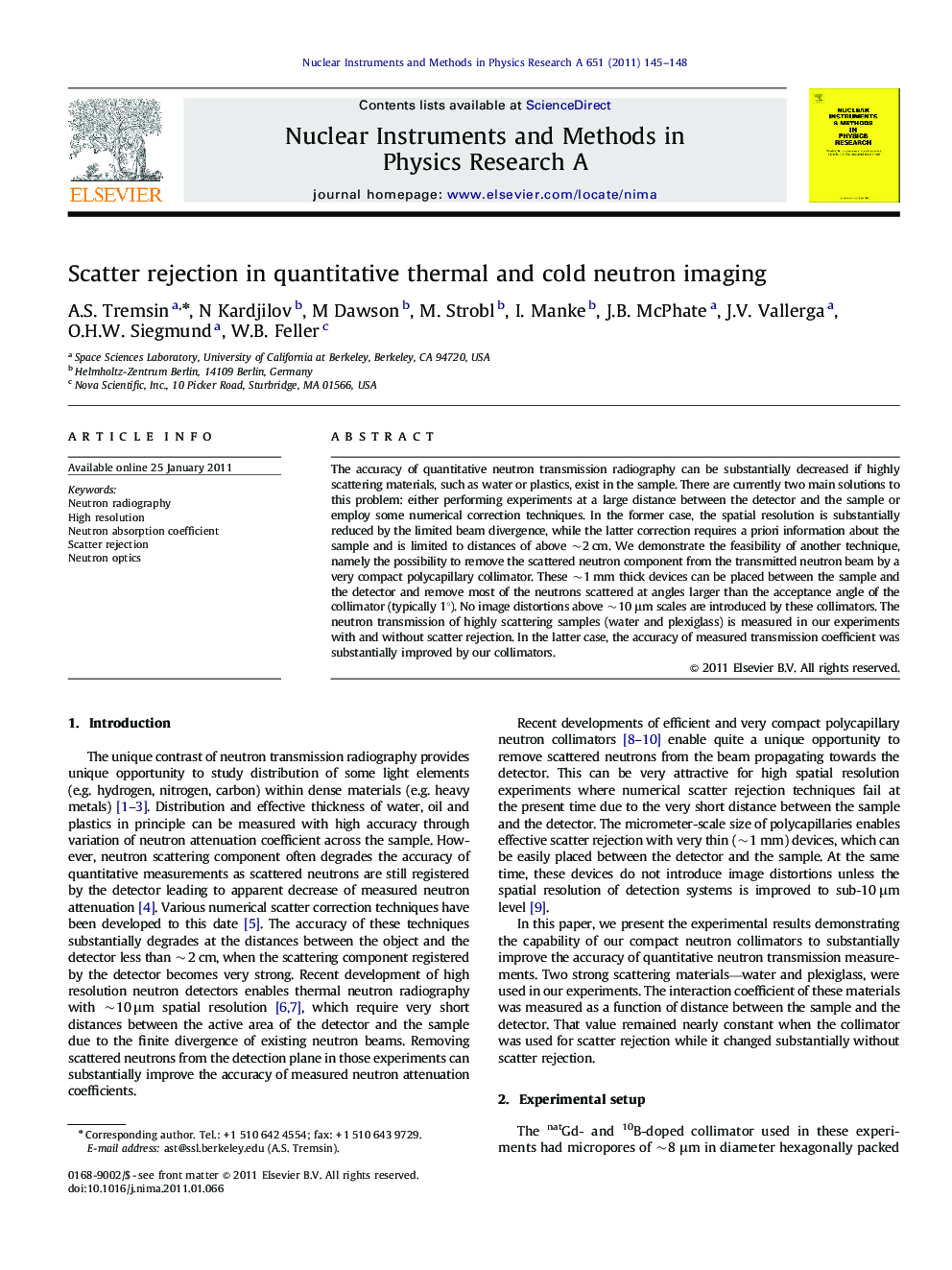| Article ID | Journal | Published Year | Pages | File Type |
|---|---|---|---|---|
| 1824350 | Nuclear Instruments and Methods in Physics Research Section A: Accelerators, Spectrometers, Detectors and Associated Equipment | 2011 | 4 Pages |
Abstract
The accuracy of quantitative neutron transmission radiography can be substantially decreased if highly scattering materials, such as water or plastics, exist in the sample. There are currently two main solutions to this problem: either performing experiments at a large distance between the detector and the sample or employ some numerical correction techniques. In the former case, the spatial resolution is substantially reduced by the limited beam divergence, while the latter correction requires a priori information about the sample and is limited to distances of above â¼2 cm. We demonstrate the feasibility of another technique, namely the possibility to remove the scattered neutron component from the transmitted neutron beam by a very compact polycapillary collimator. These â¼1 mm thick devices can be placed between the sample and the detector and remove most of the neutrons scattered at angles larger than the acceptance angle of the collimator (typically 1°). No image distortions above â¼10 μm scales are introduced by these collimators. The neutron transmission of highly scattering samples (water and plexiglass) is measured in our experiments with and without scatter rejection. In the latter case, the accuracy of measured transmission coefficient was substantially improved by our collimators.
Related Topics
Physical Sciences and Engineering
Physics and Astronomy
Instrumentation
Authors
A.S. Tremsin, N Kardjilov, M Dawson, M. Strobl, I. Manke, J.B. McPhate, J.V. Vallerga, O.H.W. Siegmund, W.B. Feller,
